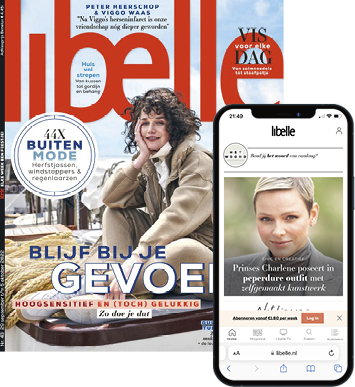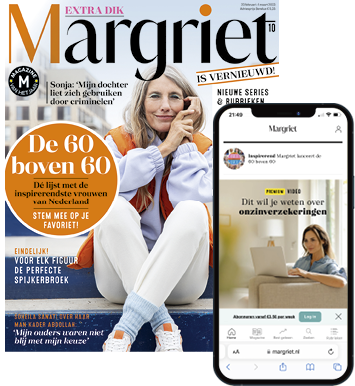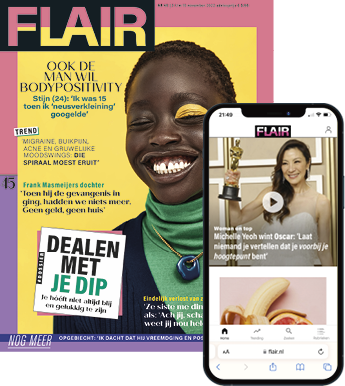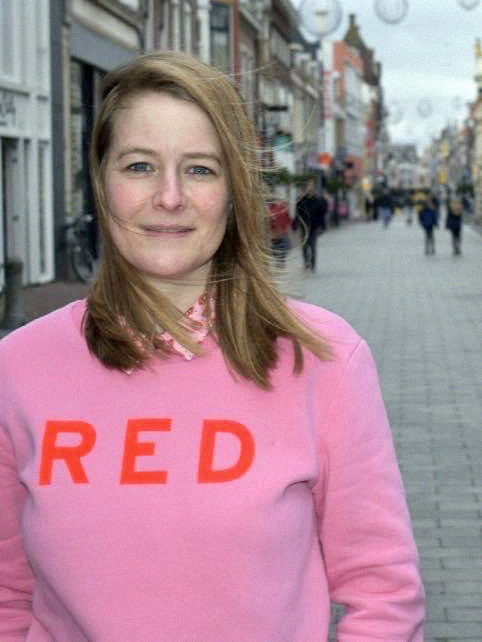MAGAZINES
WOMEN'S BRANDS
now reach all generations
DPG Media’s women’s brands decided to join forces in 2022 to reach even more women in the Netherlands. They started a women’s platform and planted lots of seeds, and there was also a harvest, says editor-in-chief Hilmar Mulder. “No other magazine brand reaches as many women as we do. The influence we have is unprecedented.”

Hilmar Mulder
(54), managing editor-in-chief of Women’s Publications and editor-in-chief of Libelle
It used to be all but forbidden: if you worked at Margriet, you’d never even dream of visiting a colleague at a rival women’s magazine like Libelle. That has changed very quickly, says Hilmar Mulder, who’s been managing editor-in-chief of Women’s Publications at DPG Media (Libelle, Margriet, Flair and Nouveau) since early 2022, in addition to her position as editor-in-chief of Libelle.
In her new role, Mulder explicitly sought to create synergy between the editors-in-chief of the women’s titles. “The first thing we did was create a clear profile for each title. Margriet is the leading magazine brand for women over 60 who want to live a happy, healthy and full life. Libelle is still the number one magazine for over-45s who are excited about life and play an active role in their community. And Flair’s target demographic, after the rebranding, are women roughly between the ages of 25 and 45.”

82%
growth
in digital reach
317k
unique
visitors per day
205,808
Total circulation

96%
growth
in digital reach
154k
unique
visitors per day
104,822
Total circulation

29%
growth
in digital reach
264k
unique
visitors per day
35,077
Total circulation
For Flair, this meant a radical revamp, with a new look and a substantive focus on self-development as the new heart of the brand, responding to the changing interests of young women. In addition, all titles were to focus more energy on digitisation: all print articles now also appear online.
Sharing content
The new symbiotic strategy for the women’s titles is taking shape in a number of different ways. “The editors-in-chief of the women’s publications meet every month,” Mulder explains. “And we’ve also started sharing content.” Content sharing began as part of a pilot, which proved to be a success, and has now taken on a structural character. “In addition to their own unique content, all our titles now also publish more generic articles that can easily be shared. Often you only need to change the images. Articles on how to save money, the flu epidemic or the International Day for the Elimination of Violence against Women appeal to the readers of all of our women’s titles. This helps us increase our reach and extend the life cycle of the content.”
The strategy has proved successful, as DPG Media’s women’s platform saw a spectacular 75 per cent growth compared to the year before: it now reaches over 40 per cent of Dutch women, with over 800,000 unique visitors a day (“You could fill the Johan Cruijff Arena 14 times a day with the women we reach through our online channels alone”). The public visibility of the brands has also increased, with the magazines’ editors-in-chiefs making monthly appearances on the TV programme Koffietijd.
Sharing schedules
Joining forces can also lead to better-quality content, whether it’s articles on social issues, service stories or entertainment news. Hilmar Mulder gives an example: “Let’s say Margriet and Libelle both wanted to make an Italy issue. Before, they wouldn’t have known this about each other, and sometimes issues like these would even come out at the same time, with similar stories. Now they would share their schedules and mood boards and discuss who was going to do what. Of course, we still make sure we don’t get in each other’s way when it comes to high-profile issues.”
“We’re constantly learning from each other,” Mulder says. “Whether it’s Libelle and Margriet working together to create a digital edition on the death of Queen Elizabeth, or finding out what does and doesn’t work when it comes to content people have to log in or pay for, sharing and analysing the data together. We’ve laid the foundation for cooperation, now it’s a matter of building on that. We’re going to take big steps forward this year.”
Marleen Staal (Flair):
“You shouldn’t hoard all your gems for yourself”
For Marleen Staal, head of Digital at Flair and a self-described ‘data geek’, the collaboration between DPG Media’s women’s titles and the strong focus on digitisation make total sense. “We create so much good content, and it’s a shame to use it for just one title.
Read more


Merel Schut (Margriet):
“Readers just want good stories”
Merel Schut, online coordinator at Margriet, also saw the content-sharing pilot evolve into a close collaboration. Moreover, with Margriet’s new website (launched in January 2022) and app, the magazine has become much more data-driven. “We now have a dashboard at the magazine showing things like our daily reach and most popular stories.”
Read more
Marleen Staal (Flair):
“You shouldn’t hoard all your gems for yourself”
For Marleen Staal, head of Digital at Flair and a self-described ‘data geek’, the collaboration between DPG Media’s women’s titles and the strong focus on digitisation make total sense. “We create so much good content, and it’s a shame to use it for just one title. You could of course make the argument that you need to keep your gems, your best stories, for your own title. And we still don’t publish the same story in more than one print edition. But those print editions have a limited shelf life, unlike many of these fantastic stories. More than anything else, it’s just a matter of getting the timing right.”
In practice, the collaboration is already extending beyond the women’s titles, says Staal. “Articles on parenting from Ouders van Nu and entertainment pieces from Veronica Superguide are often also interesting to our target audience. At Flair, we don’t have the resources to write these kinds of stories ourselves. But if we change the images, they can still be very popular with our readers.”
And no, every shared article doesn’t require its own separate meeting. “If we see that an article is doing really well, we just ask if we can publish it too,” Staal explains. For editors who came up in the print era, when titles were still in competition with each other, this new focus on sharing may take some getting used to. But the new generation has no problem with it, according to Staal. “People used to feel like they had to ‘keep up with the Joneses’. But the younger generation believes that sharing is caring: you shouldn’t hoard all your gems for yourself.”
Merel Schut (Margriet):
“Readers just want good stories”
Merel Schut, online coordinator at Margriet, also saw the content-sharing pilot evolve into a close collaboration. Moreover, with Margriet’s new website (launched in January 2022) and app, the magazine has become much more data-driven. “We now have a dashboard at the magazine showing things like our daily reach and most popular stories.”
Sometimes these are stories from other titles. “Nouveau often has very personal stories that do well with our over-60 target group. And an article from Ouders van Nu about overstressed grandmothers who have to take care of their grandchildren was also a big hit with our readers. When we get a successful story like that, we try to build on the momentum, for instance by sending out push notifications.”
According to Schut, there’s still a world to be won by analysing why some articles do well and others don’t. In any case, the days of magazines wanting to do everything themselves are behind us. “We hardly do anything related to spirituality ourselves. But if we see an interesting article from Flow, we’ll still publish it – citing the original publication, of course.” Isn’t that confusing for readers? “No, we haven’t had a single complaint or comment about it,” Schut replies. “Readers just want good stories.”